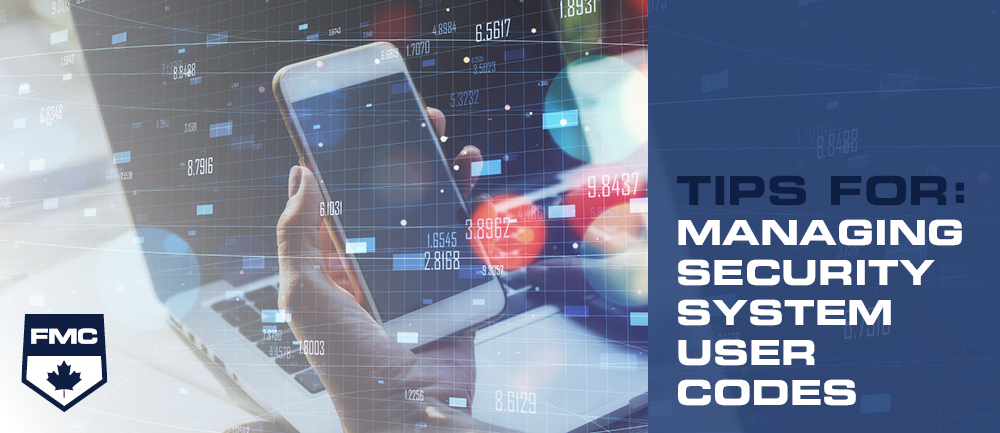Managing User Codes On Your Intrusion Alarm Monitoring System

Every intrusion alarm monitoring system needs a code for arming and disarming. This code, typically four to six digits, must be entered through a keypad. Any person who utilizes one of these systems knows that using and managing these codes is an important part of getting the most out of the system.
What is a System Code?
A system code is a four to six-digit numbered password used to arm, disarm, and perform various functions within your security system. These codes exist to ensure authorized access. Only authorized individuals should have system codes to interact with the system.
In some cases, a System Administrator can restrict a codes’ access to specific functions and/or areas of the building.
How To Choose a System Code
As a basic rule of thumb, choose a code that users can easily remember but is still difficult to guess. Remember, the goal is to prevent unauthorized access into your building.
It’s also advisable that a System Administrator retain a record of all of the user codes and the names of those that utilize them; this can be helpful in cross referencing against events or incidents.
Four Types of System Codes
Many different types of codes can be used with intrusion alarm monitoring systems. Here are the four most common:
- Master Code – This is the primary code a System Administrator will commonly use. It has the ability to perform security functions and manage administration of the system. This code should only reside with the System Administrator.
- User Code – These codes can arm and disarm the system along with any other specific areas or functions assigned to it. A User Code should only be provided to an individual who needs regular access to the building. Do not grant them permissions to adjust crucial settings in the system. Provide a unique user code to each system user.
- Guest Code –This is a restricted access code meant for temporary use. Only a user requiring brief access, like a contractor or maintenance person, should use this code.
- Duress Code – This unique code discreetly sends a signal to a Signals Receiving Centre, indicating an immediate need for help. It is rarely used, intended only for threatening situations.
Why It’s Important to Manage User Codes
How you manage these codes is important for a couple of reasons:
- If a security incident occurs at your building, review signals sent from the panel and identify unique users involved during those dates and times. If you need to remove an employee from the system, identify the assigned user code.
Methods to Manage User Codes On Your Intrusion Alarm Monitoring System
- If you are a System Administrator and are adding and removing codes yourself, keep a record of which user occupies which user slot. This will assist you if you need to quickly add or remove a user from the system.
- Place all of your user codes in a secure location. Losing these codes could allow them to fall into the wrong hands, leaving your building vulnerable.
- If you utilize contractors who require a User Code, ensure that you change the codes any time they have changes in staff. This ensures that their former employees do not have access to your building.
- Stay in communication with your security alarm monitoring company when it comes to adding and removing users from your security alarm monitoring system.
- Let the pros handle it; have your security alarm monitoring company manage your user codes. Ensure they add and remove codes correctly and maintain accurate records.
Learn More
Contact Us
 If you have questions about your security alarm system and now to properly manage user codes, please contact us at 1 888 789 FIRE (3473), email fminfo@fire-monitoring.com, or fill out the contact form below.
If you have questions about your security alarm system and now to properly manage user codes, please contact us at 1 888 789 FIRE (3473), email fminfo@fire-monitoring.com, or fill out the contact form below.
